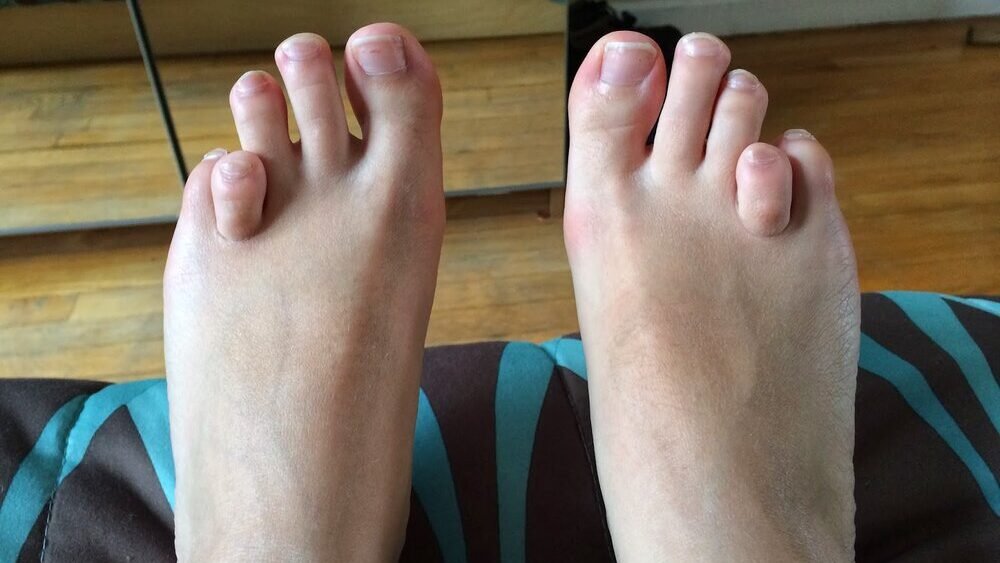
Image Credit: Battling Brachymetatarsia
What is Brachymetatarsia?
The condition known as brachymetatarsia is a foot condition that occurs when there’s an incomplete development of metatarsal bones of the foot. Although the condition can take place on any of the five metatarsals, it is most prevalent on the fourth metatarsal. The affected toe will be significantly shorter than the others. In some instances, the condition will take place on one of the feet, but it is possible for both feet to be affected. When this occurs, the case is classified as a bilateral occurrence. If more than one toe is affected, the case classification is known as brachymetapody. If the first metatarsal is affected, brachymetatarsia will be classified as Morton’s Toe. Statistically, women are 25 times more likely to be affected by brachymetatarsia than men.
What are the symptoms of Brachymetatarsia?
One of the key functions of the toes is to facilitate the ability of the body to be balanced. With only four of the five toes able to touch the ground in the case of a patient with brachymetatarsia, the patient will experience a case of uneven weight distribution that can lead to pain and discomfort during the walking process. The pain will be experienced on the front of the feet. Calluses can develop on the bottom of the feet. Wearing of shoes can also be an uncomfortable experience for a patient. With the shorter toe on the top of the feet, the toe can rub on the shoe and cause a blistering of the toe. Many people with Brachymetarsia tend to hide their feet, and avoid being in public places such as pools or the beach that will require them to be barefoot. For this reason, treatment is always advised, in order to boost the confidence of the patient.
Causes of Brachymetatarsia
From medical research, the primary root cause of brachymetatarsia is the early closure of the metatarsal growth plate. The growth plate is a key enabler in bone development, and once the plate closes, the bone can no longer grow. Genetic factors have been linked to this root cause. Identified symptoms of the condition include [2]:
- Aneuploidic Anomalies
- Trisomy 21 / Down Syndrome
- Monosomy X / Turner Syndrome
- Other anomalies
- Pseudohypoparathyroidism
- Psuedo-pseudohypoparathyroidism
- Albright’s Syndrome
- Diastrophic Dysplasia
What is the treatment of Brachymetatarsia?
The primary treatment of Brachymetatarsia is the utilization of surgery to treat the condition. The aim of the surgical process is to facilitate the lengthening of the metatarsal bone, and enable it to match the dimensions of the foot. The surgical process involves an osteotomy – a process that involves the breaking of the existing bone. A scaffold is built around the toe, and the gradual or acute lengthening process can then take place. With an external fixator, this gradual extension can take place across a period of 3-6 weeks or until deemed complete by your orthopaedic surgeon. An alternate method is the utilization of acute lengthening, where a single stage operation is done to lengthen the bone. The additional length of the bone is created by the utilization of bone grafts.
Surgery for Brachymetatarsia
With the baseline for the treatment of brachymetatarsia identified, there is often a decision matrix that is involved in determining which toe lengthening procedure will be the one that will be applied to a particular patient’s case. If conservative methods are unable to achieve the desired healing effect, then newer more innovative approaches are then taken by medical personnel.
If metatarsals are to be lengthened by up to 15mm, a single stage lengthening procedure will be ideal. Biologic and synthetic implants can be utilized to elongate the toe. This method is proven to be effective in both improved patient compliance and in the reduction of healing time [3]. An average healing time of up to nine weeks is documented. While not a perfect procedure, there are occasional complications that include neurovascular compromise, joint stiffness, and occasional twisting of the toes.
Distraction osteogenesis is the process that is utilized by most orthopaedic surgeons. With the associated breaking of the bone, and the utilization of scaffolds to elongate the toes, the patients gain the benefits of a greater achievable length than the single stage lengthening procedure. The time to mobility and also the preservation of soft tissues is also improved. Complications from the distraction osteogenesis procedure include: MTPJ stiffness, mal-alignment, subluxation and superficial skin infections from pin tracts[3].
Your orthopaedic surgeon will complete a thorough assessment of your individual case, and identify the path forward.
References:
- Limb Length: https://www.limblength.org/conditions/brachymetatarsia/
- One Point Health:https://onepointhealth.com.au/conditions/short-toe-brachymetatarsia/
- Journal of Surgical Case Reports: https://academic.oup.com/jscr/article/2018/10/rjy269/5126901


